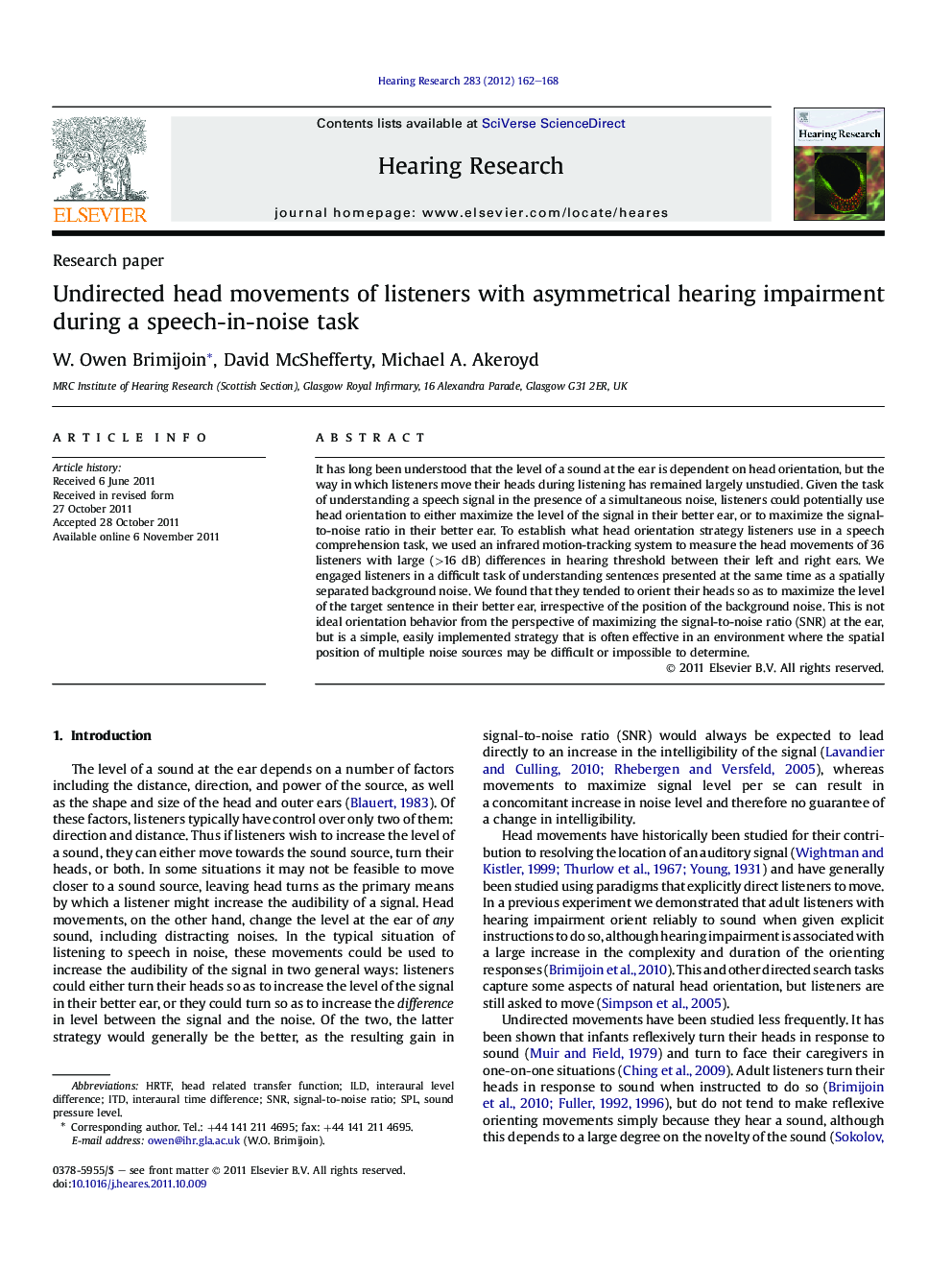| Article ID | Journal | Published Year | Pages | File Type |
|---|---|---|---|---|
| 6287625 | Hearing Research | 2012 | 7 Pages |
Abstract
It has long been understood that the level of a sound at the ear is dependent on head orientation, but the way in which listeners move their heads during listening has remained largely unstudied. Given the task of understanding a speech signal in the presence of a simultaneous noise, listeners could potentially use head orientation to either maximize the level of the signal in their better ear, or to maximize the signal-to-noise ratio in their better ear. To establish what head orientation strategy listeners use in a speech comprehension task, we used an infrared motion-tracking system to measure the head movements of 36 listeners with large (>16Â dB) differences in hearing threshold between their left and right ears. We engaged listeners in a difficult task of understanding sentences presented at the same time as a spatially separated background noise. We found that they tended to orient their heads so as to maximize the level of the target sentence in their better ear, irrespective of the position of the background noise. This is not ideal orientation behavior from the perspective of maximizing the signal-to-noise ratio (SNR) at the ear, but is a simple, easily implemented strategy that is often effective in an environment where the spatial position of multiple noise sources may be difficult or impossible to determine.
Keywords
Related Topics
Life Sciences
Neuroscience
Sensory Systems
Authors
W. Owen Brimijoin, David McShefferty, Michael A. Akeroyd,
